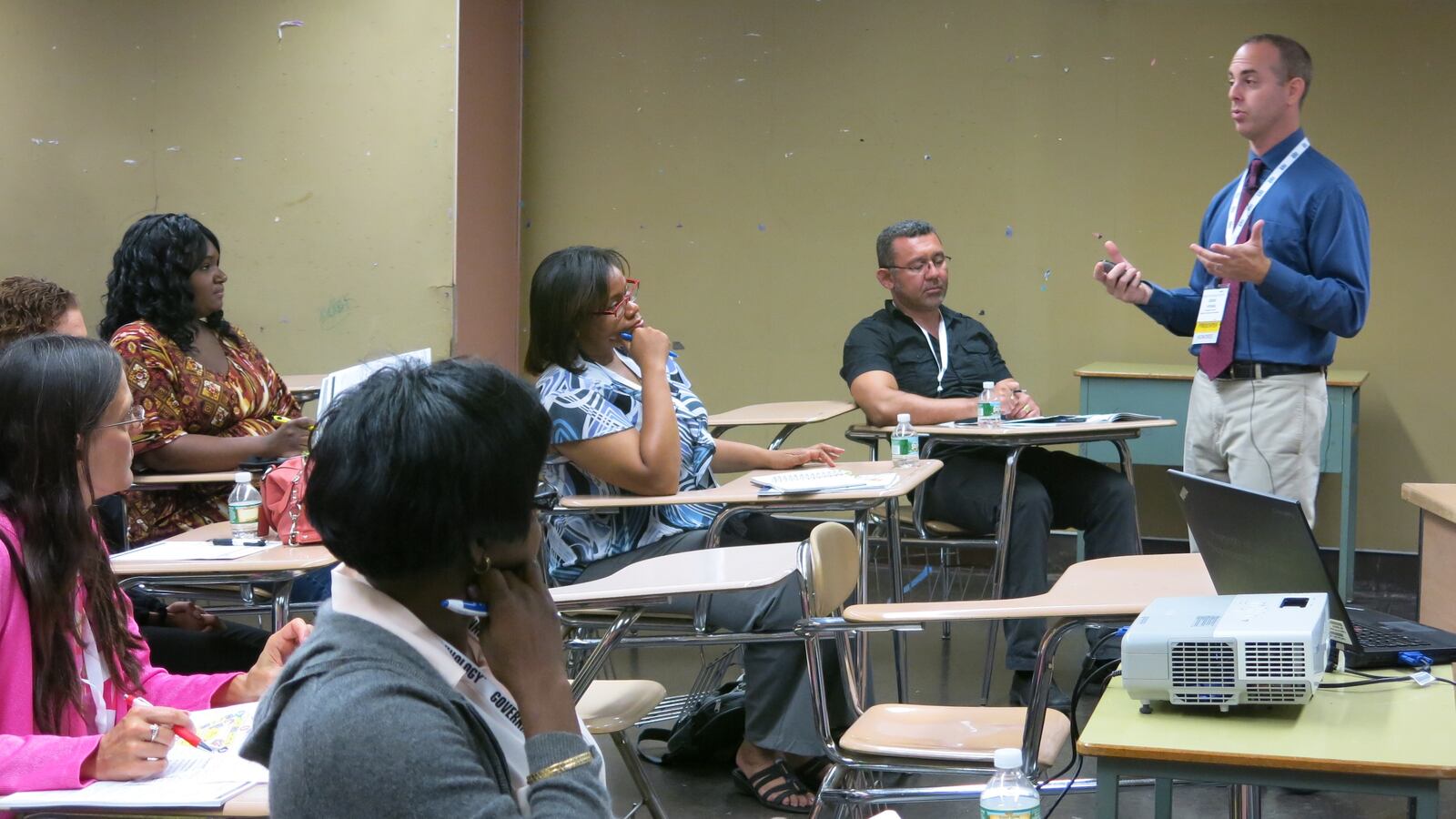Aria Mutkowski, a student at Staten Island Technical High School, received an iPad mini as an incoming freshman. All of the school’s classrooms are equipped with Smart Boards, and some even have 3-D printers.
But even with all that technology, it can be hard to see how those tools allow students to do more than taking notes in a typical notebook, she told dozens of teachers on Wednesday.
“It’s great to have all that, but one of the things I would change is [having] people know how to use them,” she said.
Mutkowski was speaking on a student panel at the School Technology Summit, a Department of Education-sponsored event that brought teachers together to brainstorm how to better incorporate tools like Google Applications, Smart boards, Skype, and other apps into their classrooms.
The day-long summit was just one of the city’s tech-focused training sessions offered to city teachers this summer. Companies like Google, Common Sense Media and Smart Technologies have also offered smaller trainings for teachers to learn how to better use their companies’ education tools, drawing about 1,500 applicants for 450 spots.
The workshops are all trying to address a key concern for teachers (and Mutkowski): how to you make new tools work amid the chaotic realities of individual schools?
Educators were eager to share ideas. In one of Wednesday’s sessions, called Managing the Digital Classroom, Adam Hyman, a fourth grade technology teacher at P.S. 101Q, described how teachers could use a “flipped classroom” model, putting a lesson online for students to watch as homework and then using class time to answer questions and help students better understand the material.
“We do one of the hardest jobs in the world. To make it easier for ourselves so we can be in different places at once and juggle all that we have to juggle, it’s hard, but if you use this stuff to your advantage, it’s a lot easier,” Hyman said.
One teacher suggested sharing the lesson-making duties among all the teachers in a particular grade, so that they could all start to use the flipped teaching model without feeling overwhelmed.
Many of the teachers that attended the other sessions said they plan to share their skills in professional development sessions this fall, especially since schools are required to increase their in-house training under the new teacher’s contract.
Darlynn Alfalla, the technology coordinator at Wagner Middle School in Manhattan, said after the Common Sense Media training session in July that the sessions allowed her to learn from other technology coordinators, since she’s the only one at her school. The sessions were a place to start finding apps and websites to use in class, she said after a session that taught teachers to use Graphite, a website for teachers to review educational websites and apps.
“You still need to explore and see if it’s going to be appropriate for your particular group of kids and your particular lesson that you want to teach,” Alfalla said, “but this is a really good starting point.”

